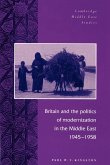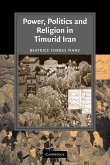This book considers the economic, social and political importance of the silk trade in Safavid Iran.
Using a wide range of archival and written sources, Rudi Matthee considers the economic, social and political networks established between Iran, its neighbours and the world at large, through the prism of the late Safavid silk trade. In so doing, he demonstrates how silk, a resource crucial to state revenue and the only commodity to span Iran's entire economic activity, was integral to aspects of late Safavid society, including its approach to commerce, export routes and, importantly, to the political and economic problems which contributed to its collapse in the early 1700s. In a challenge to traditional scholarship, the author argues that despite the introduction of a maritime, western-dominated channel, Iran's traditional land-based silk export continued to expand right up to the end of the seventeenth century. The book makes a major theoretical contribution to the debates on the social and economic history of the pre-modern world.
Review quote:
'- this book represents a contribution of whose parameters and paradigm any future study of Safavid Iran which purports to offer a comprehensive analysis of the period will have to take account.' Journal of Semitic Studies
'The book is well documented and insightful and manages to go beyond its seemingly narrow limits, to become an important contribution in the study of Safavid Iran.' Acta Orientalia
'Professor Matthee's study is a major contribution to the economic history of Safavid Iran.' Scandinavian Economic History Review
'- a nuanced and well-argued analysis of the complex and changing relationship between the Safavid state and trade.' Studia Orientalia
Table of contents:
Preface; Acknowledgements; Notes on transliteration; List of abbreviations; Maps; Introduction; 1. The Iranian silk trade: from the Silk Road to the Safavids; 2. Procedures, logistics, finances; 3. Shah 'Abbas I and the Safavid political economy: territorial expansion, anti-Ottoman diplomacy, and the politics of silk; 4. Government control and growing competition: the silk export monopoly and the advent of the European maritime companies; 5. The complications of privatization: from the abolition of the silk export monopoly to the peace of Zuhab, 1629-1639; 6. Conflict and reorientation: silk to silver, 1640-1667; 7. Renewed regulation and the rise of the Russian connection, 1660s-1690s; 8. Contraction and continuity, 1690-1730; Conclusion; Appendix; Glossary; Bibliography; Index.
Using a wide range of archival and written sources, Rudi Matthee considers the economic, social and political networks established between Iran, its neighbours and the world at large, through the prism of the late Safavid silk trade. In so doing, he demonstrates how silk, a resource crucial to state revenue and the only commodity to span Iran's entire economic activity, was integral to aspects of late Safavid society, including its approach to commerce, export routes and, importantly, to the political and economic problems which contributed to its collapse in the early 1700s. In a challenge to traditional scholarship, the author argues that despite the introduction of a maritime, western-dominated channel, Iran's traditional land-based silk export continued to expand right up to the end of the seventeenth century. The book makes a major theoretical contribution to the debates on the social and economic history of the pre-modern world.
Review quote:
'- this book represents a contribution of whose parameters and paradigm any future study of Safavid Iran which purports to offer a comprehensive analysis of the period will have to take account.' Journal of Semitic Studies
'The book is well documented and insightful and manages to go beyond its seemingly narrow limits, to become an important contribution in the study of Safavid Iran.' Acta Orientalia
'Professor Matthee's study is a major contribution to the economic history of Safavid Iran.' Scandinavian Economic History Review
'- a nuanced and well-argued analysis of the complex and changing relationship between the Safavid state and trade.' Studia Orientalia
Table of contents:
Preface; Acknowledgements; Notes on transliteration; List of abbreviations; Maps; Introduction; 1. The Iranian silk trade: from the Silk Road to the Safavids; 2. Procedures, logistics, finances; 3. Shah 'Abbas I and the Safavid political economy: territorial expansion, anti-Ottoman diplomacy, and the politics of silk; 4. Government control and growing competition: the silk export monopoly and the advent of the European maritime companies; 5. The complications of privatization: from the abolition of the silk export monopoly to the peace of Zuhab, 1629-1639; 6. Conflict and reorientation: silk to silver, 1640-1667; 7. Renewed regulation and the rise of the Russian connection, 1660s-1690s; 8. Contraction and continuity, 1690-1730; Conclusion; Appendix; Glossary; Bibliography; Index.








